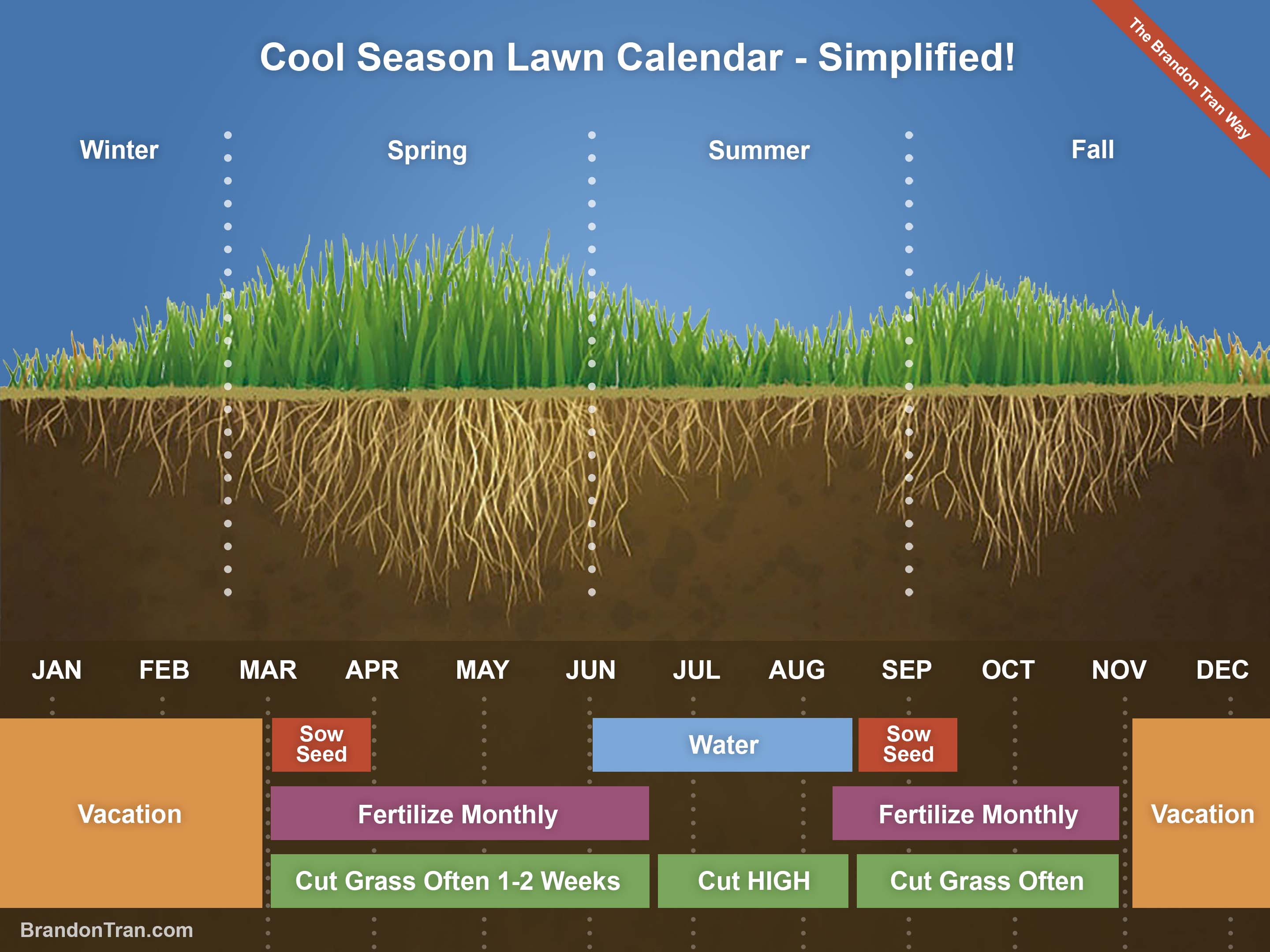Cool Season Grass Lawn Calendar for a Healthy Green Lawn
If you are like me, you appreciate an awesome green lawn. However, I also appreciate efficiency and I'm limited on time. Here are my top 4 steps and my new simple lawn calendar to show you how to achieve the healthiest and greenest lawn possible without all the excessive things other lawn enthusiasts practice.

Simple Cool Season Grass Lawn Calendar for a Healthy Green Lawn
Products Needed
- Simple Lawn Balanced Fertilizer 16-4-8 with Sprayer
- Simple Lawn High Nitrogen Fertilizer 28-0-0 with Sprayer
- Simple Lawn Solution Fertilizer Essentials 3 Gallons
Why this plan is the best
- This plan is affordable
- This plan is simple. Anyone with limited time can achieve it
- This plan is family and pet friendly. I don't use pesticides or herbicide weed killers
- This plan only includes the most impactful things you can do
Ok let's get into it
Step 1 - Good Fertilizer Once A Month
Early March you are going to start fertilizing. I want to recommend "Simple Lawn Solutions Fertilizer". There are a few others to choose from, but this one has safe ingredients, has a great price, and you get a lot more for what you pay for. It has organic properties, it's non-toxic and children pet safe. Continue applying once per month March through October. That's 8 spray applications. Spray this down and then don't forget to go back over it and water it in. The essentials pack comes with 3 products.
- Balanced fertilizer 16-4-8. This Lawn Food contains Nitrogen for encouraging greening/growth for a thicker, greener lawn. Phosphorus for resilient turf and root development. Potassium to boost plant hardiness and strength.
- Iron and additional nitrogen 6-0-0 to get a deeper dark green
- Humic acid to help with optimum nutrient uptake
To do this task you will need to know what size your property is. Mine is 3000 square feet which is the exact size their single spray bottle covers. How lucky am I. You can measure your yard using google maps or google earth.
Step 2 - Cut weekly or as often as you can
Cut at 2.5" - 3.5" and let it grow taller in the hot summer months to minimize stress. On my lawn mower that is position 4 to 6. Having a sharp blade helps make a clean cut and prevents damaging the grass tips.
Step 3 - Sow Seeds On Bare Spots
If you have any bare spots or known weed areas, throw down some extra grass seed in spring and/or fall. It will encourage grass dominance and outcompete any weeds.
Step 4 - Survive the summer heat!
You did a great job giving your grass a super healthy base to live in. Try to get (1 inch) (2.5cm) of water down per week during July and August.
These simple tasks are going to build an ultra healthy ecosystem and your grass will look epic!
Unnecessary Practices
Now here are the advanced things that I find unnecessary. I don't do these and the lawn continues to look great.
- Don't use herbicides or weed killers. A good offense can defeat weeds. I tested on a thick 10x10 area of nothing but crab grass. In the fall I sowed thick fescue seeds. The crab grass begins to die out in the fall and the fescue came in thick dominating the crab grass. I also had a 4x4 area with thick clovers. Same practice, I sowed fescue seeds and it overtook the clovers in the fall.
- Don't use pre-emergents. Again a good offense works just fine. A few weeds are not hurting anything.
- Don't use pesticides - Pesticides are terrible for the lawn and cause more stress for the grass. A more organic natural lawn will encourage a healthy ecosystem.
- Don't bag clippings. Mow often and if you do have excess clippings because you missed a week or 2, cut it twice and get more mulching going on. Thatch is good as it's like mulching your garden beds, it helps hold more moisture.
- Don't water a lot except for the hot summer. Since we are applying liquid fertilizer, we are getting some water down. Encourage deeper roots by less frequent watering. I only water maybe twice a month if needed or you see it starting to get dry. Hopefully the rain helps you out.
- Don't use soil testers. You don't need them, it's just another product they want to sell you. I did test once, I had higher acidity in the front, and more basic in the backyard for this new house. I've tested neighbors lawns. In the end the plan was the same. After the lawn has become healthy it balances out and I didn't need to do anything special at all. Focus on health and you will be fine.
- Don't use a dethatcher. It's unnecessary and thatch is needed. it also decomposes and turns back into soil after a year+.
- Don't use a core aerator. It's unnecessary. I've achieved a deep green and healthy lawn without it. The best offense is pushing more roots and getting the most growth possible. You can also sow a light amount of annual rye grass in the fall which will keep roots tillering in the ground. I'll have to share more on that in another video.